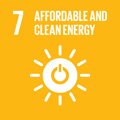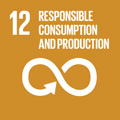- Docente: Michele Mengoni
- Credits: 6
- SSD: ING-IND/32
- Language: Italian
- Teaching Mode: Traditional lectures
- Campus: Forli
- Corso: Second cycle degree programme (LM) in Mechanical Engineering (cod. 8771)
Learning outcomes
The course delivers the principles of electromechanical energy conversion and suitable skills for the analysis of the main electrical machines for residential and industrial applications, along with the principles of power electronics devices and basic architectures.
Course contents
Power Electronics
- Basics of semiconductor physics.
- Semiconductor devices: diodes, bipolar junction transistor, MOSFET, IGBT.
- single-phase and three-phase rectifier.
- Buck Converter.
- Half Bridge.
- Full Bridge.
- Single-phase and three.phase inverter.
- Pulse Width Modulation (PWM).
- Current control.
Electromechanical energy conversion
- Principles of electromechanical energy conversio
DC machine.
- Torque expression.
- Mechanical characteristic.
- Motor and generator operation.
- Torque and speed control.
Synchronous machine.
- Torque expression.
- Motor and generator operation.
- Torque and speed control.
Induction machine.
- Torque expression.
- Mechanical characteristic.
- Motor and generator operation.
Readings/Bibliography
The pdf files of the slides utilized during the lessons can be downloaded from "Insegnamenti On line".
1. A. E. Fitzgerald, C. Kingsley, S,D. Umans: Electric Machinery. McGraw-Hill
2. M. Rashid, "Power Electronics Handbook", Butterworth-Heinemann
3. N. Mohan, T. Undeland, W. Robbins, "Power Electronics: Converters, Applications and Design", John Wiley & Sons Inc
Teaching methods
The lessons are supported by numerical simulation of main electric machines and of main power electronics devices and configurations.
Assessment methods
The assessment of learning is based on two oral examinations.
Teaching tools
Lessons and exercises are carried out with the help of a personal computer and slides (Power Point, MATLAB).
Office hours
See the website of Michele Mengoni
SDGs



This teaching activity contributes to the achievement of the Sustainable Development Goals of the UN 2030 Agenda.
